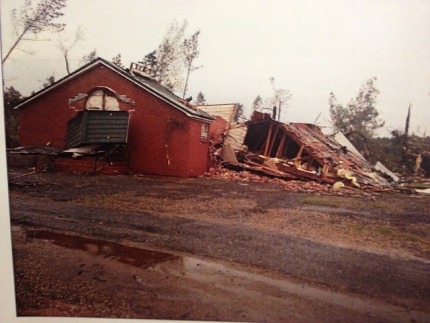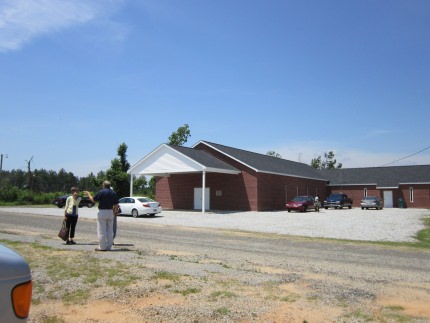Hoboken, N.J., Nov. 1, 2012 — FEMA Inspector Richard Martin inspects a basement apartment in Hoboken two days after the residents applied for FEMA assistance. FEMA is working with many partners and organizations to provide assistance to residents affected by Hurricane Sandy.
We understand the mixed range of emotions survivors may be experiencing after going through a catastrophic and life changing disaster. Many people are returning home to find that everything they’ve ever known is completely destroyed. During these difficult times, it’s hard to even process everything that has occurred over the past several days, let alone think about the next steps — but we’re here to help you through the disaster registration process and make it as easy as possible.
If you’re a survivor in one of the declared counties you should call to apply for federal assistance. If you have access to the Internet, you can apply online and on your mobile device too. If you don’t have access to the Internet, please call 1-800-621-FEMA(3362) TTY 1-800-462-7585. Our online application is an easier and faster way to apply for assistance, visit at www.disasterassistance.gov to complete your application. You should also be aware that FEMA often opens Disaster Recovery Centers in disaster areas, once they are established in your area, you can visit the location to speak to someone in person about available disaster programs.
Once you’ve applied for federal assistance, here’s what you can expect next:
- Applicants who register with FEMA will be given a personal application number. This number will be used to provide later to a FEMA Housing Inspector. So it’s important that you write this number down, and keep it secure and handy for future use.
- A FEMA Housing Inspector will contact you to make an appointment to visit your property within 14 days after you apply. The inspector will assess disaster related damage for your real and personal property.
Important notes:
- There is no fee for the inspection.
- Inspectors are contractors, not FEMA employees, but your inspector will have picture identification.
- It is important to understand that you or someone 18 years of age who lived in the household prior to the disaster must be present for your scheduled appointment. This inspection generally takes 30-40 minutes but can be shorter, and consists of a general inspection of damaged areas of your home and a review of your records.It’s also important to understand what the inspector will be asking of you.
The inspector will ask to see:
- Picture Identification
- Proof of Ownership/Occupancy of damaged residence (Structural Insurance, Tax Bill, Mortgage Payment Book/Utility Bill)
- Insurance documents: Home and/or Auto (Structural Insurance/Auto Declaration Sheet)
- List of household occupants living in residence at time of disaster
- All disaster related damages to both real and personal property
- Once the inspection process is complete, your case will be reviewed by FEMA and you will receive a letter, or email if you signed up for E-Correspondence, outlining the decision.
- If you qualify for a FEMA grant, FEMA will send you a check by mail or deposit it directly into your bank account. You will also receive a letter describing how you are to use the money. You should only use the money given to you as explained in the letter and save receipts on how you spent the money.
- If you do not qualify for a FEMA grant, you will receive a letter explaining why you were turned down and will be given a chance to appeal the decision. Your appeal rights will be described in this letter. Appeals must be in writing and mailed within 60 days of FEMA’s decision.
- If you’re referred to the Small Business Administration (SBA), you will receive a SBA application. The application must be completed and returned in order to be considered for a loan as well as certain types of grant assistance. SBA representatives are available to help you with the application at localDisaster Recovery Centers. Completing and returning the loan application does not mean that you must accept the loan.
As with all disasters, FEMA is just part of the team that supports disaster response and recovery efforts. That team is comprised of tribal, territorial, state, and local governments, faith-based and community organizations as well as the private sector and voluntary organizations. Together we are working to help survivors through this difficult time in their lives.
If you know someone who lives in an eligible county and has suffered damages from Hurricane Sandy or if you have suffered damages yourself, we encourage you to register for federal disaster assistance as soon as possible. The sooner you apply, the faster you will receive a reply and can move forward in the recovery process.
And if you were not affected by Hurricane Sandy but know survivors, please help us spread the message and encourage them to apply for assistance.
Here are some other ways everyone can help Hurricane Sandy survivors:
- Cash is the most efficient method of donating – Cash offers voluntary agencies the most flexibility in obtaining the most-needed resources and pumps money into the local economy to help businesses recover.
- Volunteer or donate through a trusted organization – At the national level, many voluntary, faith-based and community-based organizations are active in disasters, and are trusted ways to donate to disaster survivors. In addition to the national members, each state has its own list of voluntary organizations active in disasters.
Also, please review our page with info on volunteering and donating responsibly.
We are committed in continuing to provide support to the governors, tribal leaders and communities impacted by Hurricane Sandy. As response efforts continue, FEMA and our federal partners have been in close contact with emergency officials to assess the unmet needs of survivors. Visit our Hurricane Sandy page for updates and other resources related to response and recovery efforts.


